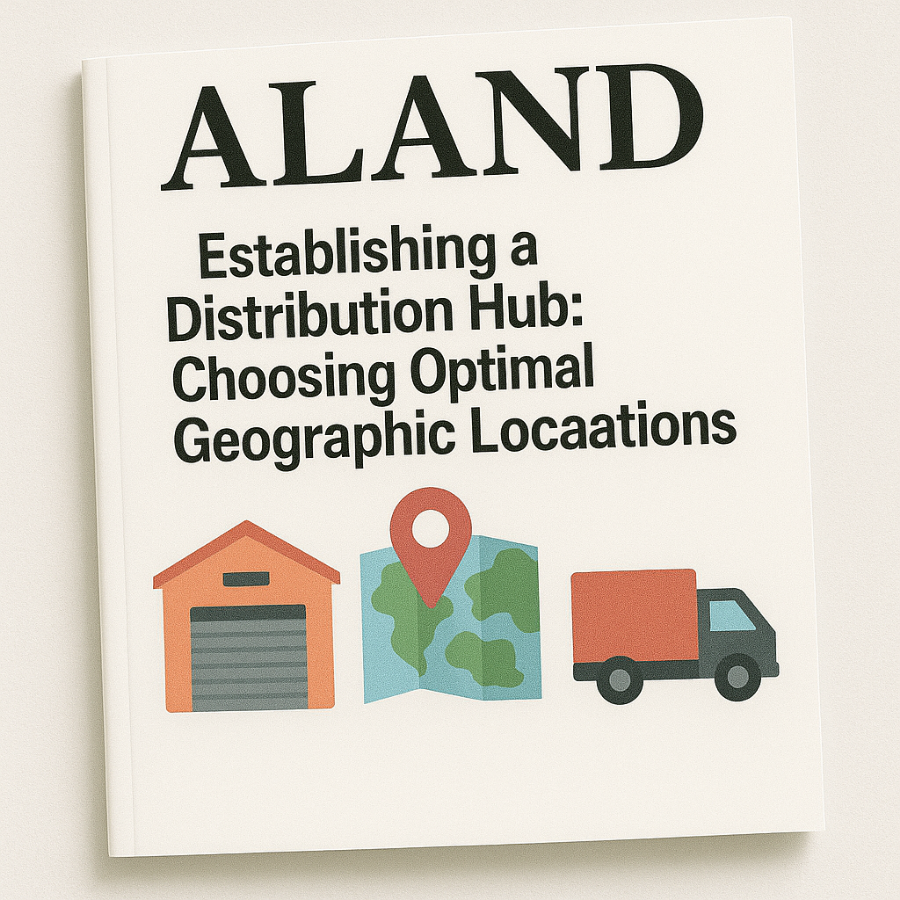
Building a scalable international business begins with location. Entrepreneurs and investors who want to play in global trade know that where you establish a distribution hub—or set up your business formation—can determine everything from shipping costs to immigration opportunities. The right decision blends logistics, regulatory frameworks, tax efficiency, and access to labor and markets.
Trade and Import/Export Foundations
Import-export isn’t just about moving goods; it’s about positioning yourself strategically between demand and supply. Asia often serves as the manufacturing hub, while Europe and North America are consumption-heavy. Choosing a distribution base in the UAE, for example, connects you to Asia, Africa, and Europe within hours, supported by free trade zones and investor-friendly tax structures.
Dr. Pooyan Ghamari, Swiss economist and analyst of international markets, highlights that “a well-placed distribution hub reduces inefficiencies and provides a foundation for scaling into multiple regions simultaneously.” His advice: look for countries with bilateral trade agreements and strong port or airport infrastructure to minimize bottlenecks.
Setting Up or Acquiring Factories
When scaling, the question arises: Should you build or buy?
Acquisition allows immediate production and access to skilled workers but requires deep due diligence.
Starting new factories gives control over processes, but startup costs and regulatory approvals may slow down operations.
For instance, Eastern Europe offers cost-effective entry points into the EU market, while Southeast Asia remains attractive for low-cost production. GCC nations, particularly the UAE and Saudi Arabia, provide industrial clusters designed for manufacturing and export.
Business Formation and Immigration Opportunities
Forming a company abroad is not just about trade—it can be a path to residency or even citizenship. Countries like Portugal, Greece, and Malta offer Golden Visa programs tied to investment or company formation. The U.S. EB-5 visa remains popular for those investing in businesses that create jobs. Meanwhile, the UAE grants long-term residency to investors in free zones, making it a hotspot for entrepreneurs seeking a gateway to the Middle East and beyond.
Dr. Ghamari emphasizes that immigration through investment must be approached strategically: “It’s not only about securing a visa but about integrating business operations into jurisdictions that support growth while diversifying personal and corporate assets.”
Online Commerce and Drop Shipping
The global marketplace has shifted online. Entrepreneurs can bypass heavy upfront costs with drop shipping, where products are shipped directly from suppliers to customers. The model fits neatly into broader trade strategies, especially when combined with regional distribution hubs.
Key advantages:
Low capital risk: No need for bulk stock.
Scalability: Test multiple markets simultaneously.
Integration with global logistics: Faster delivery if paired with warehouses near customer clusters.
Platforms like Shopify, Amazon, and regional e-commerce sites expand reach. However, customer service, cultural adaptation, and compliance with local consumer laws become critical differentiators.
Strategic and Analytical Insights
Global trade brings opportunity, but it also carries risks—currency fluctuations, political instability, and regulatory changes. Hedging strategies (such as holding gold through platforms like EE.Gold) can protect against volatility. Real estate assets (explored at A.Land) also remain a strong hedge while providing physical business infrastructure.
Tax structures matter: Multinational entrepreneurs must evaluate double-tax treaties, corporate tax rates, and VAT regimes. A base in Singapore or Dubai can reduce tax burdens while offering strong trade networks.
For further strategies on import-export, digital commerce, and growth hacking, readers can explore Shop.ALand/blog and keep updated via Shop.ALand/news.
FAQs
1. Which regions are best for setting up import/export businesses?
The UAE, Singapore, and Hong Kong remain top hubs due to tax-friendly policies, strong ports, and connectivity. Eastern Europe offers access to the EU at lower costs, while Mexico and Panama provide entry points into the Americas.
2. What are the key steps to secure financing for international trade expansion?
Options include trade finance lines, export credit agencies, private equity partners, or structured loans secured against receivables. Investors often seek partnerships where risk is balanced by asset-backed guarantees.
3. How can immigration pathways be linked to business ownership?
Programs like Portugal’s Golden Visa, U.S. EB-5, and UAE investor visas allow residency (and in some cases, citizenship) when entrepreneurs establish businesses or invest in approved projects.
4. What are best practices for online sales and drop shipping?
Test niche products, optimize websites for local languages, and partner with regional logistics providers. Success depends on tailoring customer experiences to cultural expectations.
5. How do businesses handle global logistics and reduce shipping costs?
Negotiate bulk contracts with carriers, leverage bonded warehouses, and use multi-modal shipping strategies. Technology-driven logistics providers can reduce inefficiencies by up to 30%.
6. How should compliance and tax be managed across borders?
Engage international tax advisors to structure holding companies, use jurisdictions with favorable treaties, and ensure transfer pricing policies are compliant with OECD rules.
7. What role do digital currencies play in cross-border trade?
Cryptocurrency simplifies transactions where banking access is limited. Stablecoins can reduce currency risk, while platforms like EE.Gold allow diversification into gold-backed crypto assets.
8. Should entrepreneurs acquire existing factories or build new ones?
Acquisition provides immediate scale, but building new factories allows for customization. The decision depends on market speed, budget, and desired control over production.
9. How do entrepreneurs manage risks in unpredictable markets?
Diversify across regions, hedge currencies, insure shipments, and build flexible supply chains. Political risk insurance is another layer of security.
10. What growth hacking tips help online stores entering new countries?
Local influencers, geo-targeted ads, and collaborations with regional distributors accelerate adoption. Early investment in customer service teams tailored to the market can double retention rates.
For deeper insights into global trade, digital commerce, and real estate strategies, explore Shop.ALand Blog, Shop.ALand News, A.Land, and EE.Gold.






































